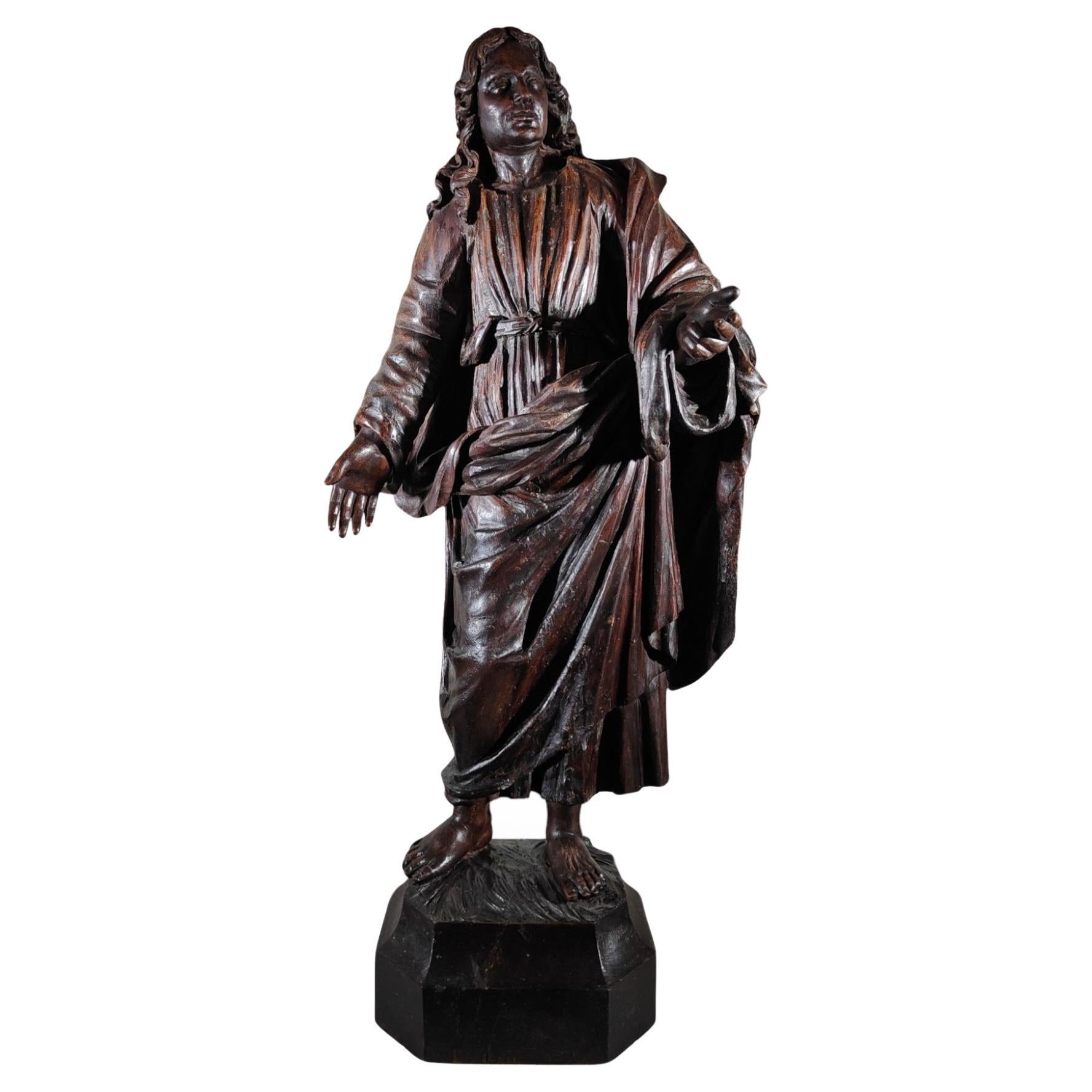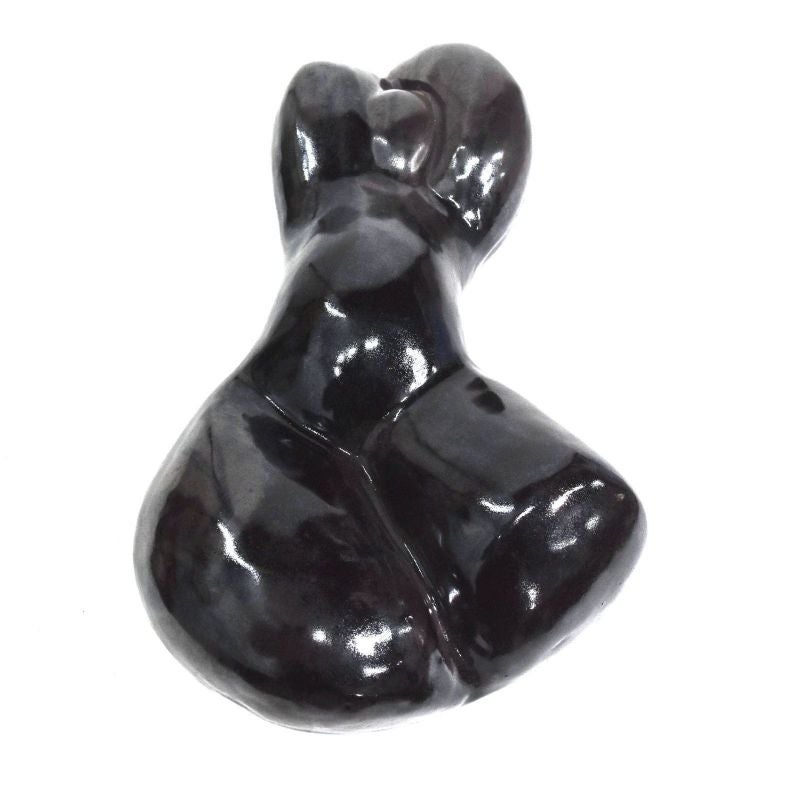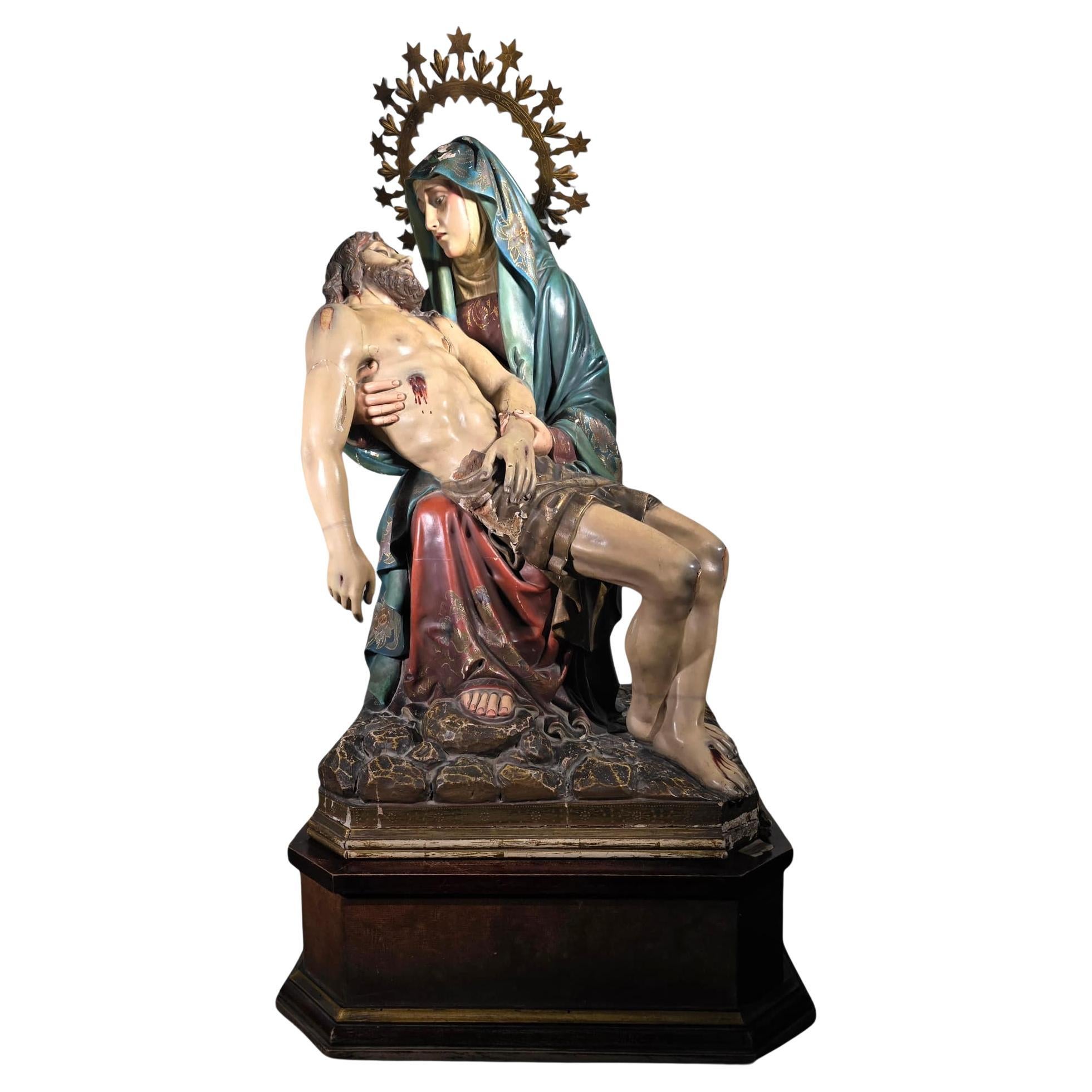Items Similar to An important almoner sculpture from the Lombardy-Veneto area, around 1730.
Video Loading
Want more images or videos?
Request additional images or videos from the seller
1 of 22
An important almoner sculpture from the Lombardy-Veneto area, around 1730.
About the Item
The base is circular, with a wavy profile, prepared with pastiglia (refined plaster) and finished with gilding in the upper band.
The median band has a pale celadon green covering the tablet.
The same green with which the boundary circle is highlighted highlights, at the top, the band between the base and the rest of the sculpture.
Above the base is a patinated copper plate, with the hours alternating with diamond-shaped elements. A central pivot supports the skull, the hour arrow (the snake) and the minutes of the arrow, which are free to rotate on the dial. purely as a metaphor for the passing of time.
The skull was used to collect the alms coins, it has a cut at the top to place the alms offering and, behind the nape, a bony portion acts as a door hinged to the right and can be opened to the left by extracting the fixing needle to collect the coins from the inside. Lombardo Veneto-Italy, first part of XVIII century. (SHIP TO EU ONLY)
- Dimensions:Height: 9 in (22.86 cm)Width: 11 in (27.94 cm)Depth: 11 in (27.94 cm)
- Materials and Techniques:
- Place of Origin:
- Period:
- Date of Manufacture:1730
- Condition:Wear consistent with age and use.
- Seller Location:Milan, IT
- Reference Number:1stDibs: LU917135113992
About the Seller
5.0
Vetted Seller
These experienced sellers undergo a comprehensive evaluation by our team of in-house experts.
Established in 1991
1stDibs seller since 2011
209 sales on 1stDibs
Typical response time: 2 hours
- ShippingRetrieving quote...Ships From: Milan, Italy
- Return PolicyA return for this item may be initiated within 7 days of delivery.
More From This SellerView All
- Sculptures of a Cardinal and a Bishop, Venice, 1730Located in Milan, ITOver a late baroque richly sculpted and engraved base with a cartouche over the front, the moved figures partially covered with wide fur and drape, depicting a bishop and a cardinal....Category
Antique 1730s Italian Figurative Sculptures
MaterialsWood
- Important Cultural and Decorative Object, Germany Around 1750Located in Milan, ITA plaster sculpture depicting a skull is placed above the base of a plinth in the shape of a column, made of fir wood and finished with pastiglia (refined plaster) and gilded gold. ...Category
Antique Mid-18th Century German Figurative Sculptures
MaterialsBrass, Bronze
- An imitation of a coral branch from Wunderkammer, Italy 1780.Located in Milan, ITThe base is wheel turned wood, white laquered painted. The branch is emulated by a metal rod covered by stucco and Murano glass, black beads. Italy circa 1780.Category
Antique Late 19th Century Italian Figurative Sculptures
MaterialsMetal
- Bronze Sculpture of an Italian Grayhound Dog, France, 1880Located in Milan, ITSculpture of an italian grayhound. Patinated bronze. The moved base is engraved with decorative motives. Original patina. France circa 1880.Category
Antique Late 19th Century French Animal Sculptures
MaterialsBronze
- An anatomical sculpture, depicting a flayed man, France circa 1860.Located in Milan, ITAn anatomical plaster sculpture with traces of gilding, depicting a flayed man sitting on a cubic base, in a position with the torso inclined and the arms supporting the head. Refere...Category
Antique Mid-19th Century French Figurative Sculptures
MaterialsPlaster
- Horse’s Head Sculpture, Decorative Part of an English Country House England 1870Located in Milan, ITSculpture in gilded zinc sheet with gold leaf depicting a horse's head. The sculpture is entirely embossed and shows two mane wings. The equine head was a decorative part of an Engli...Category
Antique Late 19th Century English Animal Sculptures
MaterialsZinc
You May Also Like
- Important Sculpture Of The Apostle Saint John Of Veneto In ItalyLocated in Madrid, ESThis important sculpture of the apostle Saint John, originating from Veneto, Italy, portrays one of Jesus' closest and most beloved disciples. Saint John, also known as "The Beloved"...Category
Antique 16th Century Figurative Sculptures
MaterialsWood
- Anthropomorphic Sculpture of an Abstract Woman from the 1950S Signed FayolieLocated in Marseille, FRAnthropomorphic sculpture of an abstract woman from the 1950s with a length of 44 cm, a width of 25 cm and a depth of 17 cm. Signed Fayolie. ...Category
20th Century Abstract Sculptures
MaterialsEarthenware
- Important 19th Century Sculpture: The PietaLocated in Madrid, ESImmerse yourself in the poignant beauty of this significant carved wood and polychrome sculpture depicting the iconic scene of the Pieta. Crafted possibly in Spain during the 19th ce...Category
Antique Early 19th Century Figurative Sculptures
MaterialsFruitwood
- Important Portuguese Sculpture from the 17th Century, "Our Lady and Child Jesus"By Europa AntiquesLocated in Madrid, ESImportant Portuguese Sacred Art Sculpture from the 17th century, "Our Lady and Child Jesus" in polychromatic and gilded wood, It was never restored - m...Category
Antique 17th Century Portuguese Baroque Figurative Sculptures
MaterialsWood
- Important German Pietà from the, 14th CenturyLocated in Saint-Ouen, FRIMPORTANT GERMAN PIETÀ FROM THE 14th CENTURY ORIGIN: GERMANY, REGION DE COLOGNE PERIOD: BEGINNING IF THE 14th CENTURY, ca. 1330 Height: 98 cm Length: 45 cm Depth: 33 cm Polychromed linden wood Good condition of conservation Provenance : particular Alsatian collection The theme of the Pietà or Vesperbild appears in Germany at the end of the 13th century, reflecting the mysticism of the late Middle Ages. Although the theme does not exist in the Gospels, it was often mentioned in contemporary devotional literature. Indeed, during the first half of the 14th century, mystical thought and devotional practices changed under the impulse of a number of religious, among them Heinrich Suso and St Bridget. In his writings, Suso placed important emphasis on contemplation and meditation in the footsteps of Christ's martyrdom. This will have great impact in the field of art, especially in Germany and later in France. The emphasis will from now on be on grief, death is shown in a straightforward way. The wounds of Christ are gaping and bloody. The suffering of Christ and the seven sorrows of the Virgin Mary are meditated upon. This piece demonstrates the interest of the faithful in these representations where pathos reigns. The virgin is represented seated in a frontal position. The bust is very elongated. She is wearing a red dress with a simple neckline and a blue mantel...Category
Antique 15th Century and Earlier Figurative Sculptures
MaterialsWood
- Important Portuguese Oratory from the 17th CenturyBy Europa AntiquesLocated in Madrid, ESPortuguese Oratory from the 17th century, rosewood, internally sculpture in polychromatic and golden wood "The Virgin with the Child" Perfect cond...Category
Antique 17th Century Portuguese Baroque Figurative Sculptures
MaterialsWood
Recently Viewed
View AllMore Ways To Browse
Mid Century Ballerina Statue
Moreau Bronze Kiss
Moreau Bronze The Kiss
Peggy Mach
Serge Yourievitch
Alabaster Buddha Heads
Antique Michelin Man
B Boschetti Roma
Bedouin Warrior Sculpture
Curtis Jere Balloon
Dancing Fawn Sculpture
E Gazzeri
Gallo Glassware
Grand Tour Boxer
Hercules And Antaeus
Hercules Antaeus
Herend Bunny
Hermes Cloak





